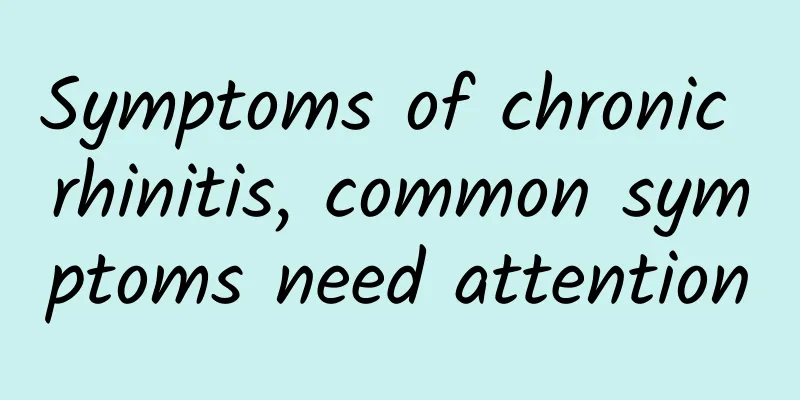What is cerebral infarction?

|
Cerebral infarction is also called cerebral infarction. Its scientific name is ischemic stroke. It is a condition in which the blood supply to the brain is impaired, leading to cerebral ischemia and hypoxia. This can cause ischemic necrosis of brain tissue. Clinically, it often leads to cerebral thrombosis, cerebral embolism, or lacunar infarction, which is particularly harmful to the patient's health. In recent years, the incidence of cerebral infarction has been very high. Causes Common clinical conditions include cerebral thrombosis and cerebral embolism. The former is caused by arterial stenosis, which gradually forms a blood clot in the lumen and eventually blocks the artery. The latter is caused by blockage of arteries by abnormal substances in the bloodstream called emboli, such as emboli that break off from blood clots in the heart chambers of certain heart diseases. Clinical manifestations 1. Main clinical symptoms The clinical symptoms of cerebral infarction are complex, which are related to the site of brain damage, the size of ischemic blood vessels, the severity of ischemia, the presence or absence of other diseases before the onset of the disease, and the presence or absence of other important organ diseases. In mild cases, there may be no symptoms at all, that is, asymptomatic cerebral infarction; it may also manifest as recurrent limb paralysis or dizziness, that is, transient ischemic attack; in severe cases, there may not only be limb paralysis, but even acute coma and death. If the lesion affects the cerebral cortex, it may manifest as epileptic seizures in the acute stage of cerebrovascular disease, with the highest incidence within 1 day after the onset of the disease. Cerebrovascular disease with epilepsy as the first onset is rare. Common symptoms include: (1) Subjective symptoms include headache, dizziness, vertigo, nausea, vomiting, motor and/or sensory aphasia, and even coma. (2) Cranial nerve symptoms include staring toward the side of the lesion, central facial paralysis and tongue paralysis, and pseudobulbar palsy, such as choking when drinking water and difficulty swallowing. (3) Physical symptoms include hemiplegia or mild hemiplegia, hemisesthesia, unsteady gait, limb weakness, incontinence, etc. 2. Clinical classification of cerebral infarction site (1) Lacunar infarction: The infarct area of cerebral infarction is less than 1.5 mm, and the symptoms include: subacute onset, dizziness, unsteady gait, limb weakness, and a few patients may have choking when drinking water and difficulty swallowing; there may also be hemiplegia and hemisensory loss, and some patients have no localizing signs. (2) Medium-sized infarctions are most common in the basal ganglia, thalamus, bilateral frontal lobes, and temporal lobes. Symptoms include: sudden headache, dizziness, frequent nausea, vomiting, clear consciousness, hemiplegia or hemisensory disorder, hemianopsia, central facial paralysis and tongue paralysis, pseudobulbar paralysis, aphasia, etc. (3) Patients with large-area infarction have an acute onset and are in critical condition. They may suffer from hemianopsia, hemiplegia, hemisensory loss, or even quadriplegia, cerebral hernia, and coma. |
<<: How to use cabbage juice to treat stomach problems
>>: Clinical manifestations of hepatic encephalopathy
Recommend
What to do if your baby is constipated while drinking milk
Babies are prone to constipation after drinking m...
How to raise platelets
Blood plays an important role in the human body. ...
Pain in the middle of the chest
The sudden colic in the middle of the chest may b...
Can I drink alcohol after moxibustion?
Moxibustion is a traditional Chinese medicine tre...
Synovitis Knee Fever
I believe that many people do not know much about...
Effective treatment for tenosynovitis
The so-called tendon sheath refers to a synovial ...
Treatment of lymphoma
Lymphoma is actually a malignant tumor that origi...
What is calf muscle atrophy?
Muscle atrophy in the calf area is a great threat...
How to treat acne
Acne is an accessory to the fast-paced modern lif...
What foods are better to eat when myocardial enzymes are high?
Myocardial enzyme is an indicator of a person'...
Make a healthy European bread for breakfast - brown sugar and black oatmeal European bread
Oats have high nutritional value and can be cooke...
Disadvantages of cystoscopy
Cystoscopy is a relatively common examination met...
Spleen deficiency diet therapy is effective, three foods are worth choosing
For people with spleen deficiency, if they want t...
Why does my heart beat faster and I feel anxious after taking Chinese medicine?
In modern society, Western medicine is generally ...
How long does it take to survive small cell lung cancer?
Small cell lung cancer is also a small part of lu...









